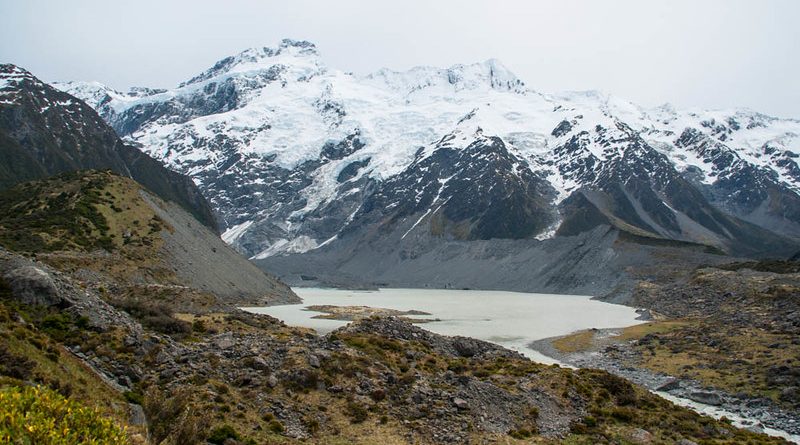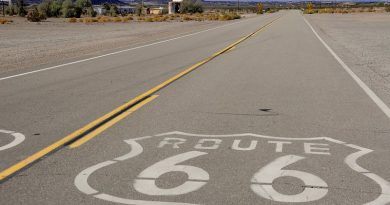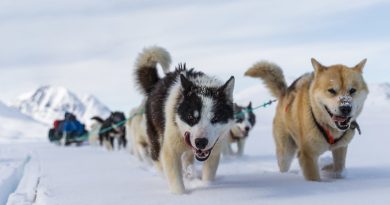Ice Climbing Mount Rainier
Where: near Seattle, Washington, North West USA.
Best season: Summer is a more favourable time to visit the Northern states, avoiding the harsh ice of winter.
Best sights: Stunning ice capped views of the surrounding terrains.
Remember to bring: All weather gig and glacier glasses.
Watch out for: Snow blindness is a real problem.
Mt. Rainier is considered the longest endurance climb in the lower forty eight states of America and is located ninety-five miles south east of Seattle, in the Pacific Northwest state of Washington. Rainier is known to local native Americans as Tahoma or ‘Great Mountain’. It provides the beautiful backdrop to the city of Seattle. Although the climb is strenuous, it’s one that can be done by relatively new converts to mountaineering, provided you have some training and a knowledgeable guide.
Highlights
– Two-day climbing school at the foot of Rainier to teach you mountaineering basics.
– Battling with your wits and enduring the physical strains of climbing to the summit.
– Reaching the summit has to be the highlight of any mountain climb.
Our Journey Path (as featured in Best Treks)
Zay starts his summit attempt at Paradise, on the south side of the mountain in Mt. Rainier National Park. This is the base for all climbs on Rainier. From Paradise, he spends a day making the slow climb up to Camp Muir, his first overnight camp at ten thousand feet.
Next morning he has to wake up at 0200 to start his ascent of the summit. There are several routes, but Zay takes the route over Disappointment Cleaver. This part of the climb is rather technical and Zay has to bear in mind the technique he learned during the two-day training he did at the bottom.
Zay and his guide Peter Whittaker climb up Disappointment Cleaver at 12,300 feet, before finally reaching the summit – Columbia Crest at 14, 411 feet.
Travellers Tips
Mountaineering is a dangerous sport and you should never attempt any climb without proper training and guidance. Take a course, do your homework, stay in good shape, but most of all, go with someone more experienced with yourself. Better still, make sure your climbing partner has made the climb before and is an expert.
Anyone attempting to climb Mt. Rainier must first sign in with the Park rangers.
Some of the crevasses on the route to the summit can be two hundred feet or deeper. You should always be roped together with another climber for safety. If you fall down, your climbing partner can hold you while you try and climb out.
Day hikers often make the hike to Camp Muir, but you need to make sure you bring all-weather gear, a good supply of food and water, and sunblock.
You’ll need glacier glasses with side protection for when you get on to Rainier’s higher glaciers. The sun is so bright up there, there’s a lot of reflection and snow blindness is a very real danger.
Mountaineering is a physically demanding sport. It is not an easy climb. It is imperative to undertake a rigorous conditioning program, with emphasis on the cardiovascular system and improving leg/back strength. Rainier Mountaineering recommends climbing hills, stairs and stadium steps while wearing a backpack as ideal training to simulate the exercise of climbing Mt. Rainier. It is important to wear a pack when training and be comfortable carrying weight (approx. 35lbs. on the Summit Climb and 50 lbs. on Seminars). In addition, a variety of different exercises are recommended such as running, hiking, cycling and weight training. Work on building endurance. This exercise program should be started well in advance of the climb. You simply cannot over-train for this trip.
Climbers must be prepared to navigate in white-out conditions with little or no visibility. Mistakes in navigation on Mt. Rainier during storms and white-outs have resulted in lost climbers and occasional fatalities. Make sure you obtain the handout from the Paradise Ranger Station containing compass bearings to and from Camp Muir. Bring a compass, a topographic map and an altimeter that is accurate to within ten feet.
Remember to practice ‘No Trace’ climbing – it is our responsibility to leave nature as we found it. All garbage, including solid human waste, must be removed from the mountain. Use the blue bags for waste disposal – these are available at ranger stations and Camp Muir.
Did you know?
– Only forty percent of the people who attempt Mt. Rainier actually make it to the summit.
– Mt. Rainier is considered the longest endurance climb in the lower 48 states. At 14,411 feet (nearly three miles high), Rainier is the tallest volcano in the Cascade Range. The Cascade mountain range stretches from Mount Garibaldi in Canada’s British Columbia, to Lassen Peak in northern California.
– Mt. Rainier is the most extensively glaciated volcanic peak in the continental USA.
– Mt. Rainier is an active volcano, and the most recent documented eruption was a relatively small one during the early to mid-1800s. At one time, Rainier was 16,000 feet above sea level, but an eruption 5800 years ago blew its top off, spewing a wall of mud across 125 square miles of surrounding countryside and creating the Osceola Mudflow. The last major eruption occurred 2500 years ago, which created a second volcanic cone at its summit. You can still see how the two craters overlap at Columbia Crest, and the remains of the older cone can be seen at Liberty Cap and Point Success.
– The first documented climb of Mt. Rainier was in 1870. A Yakama native guide led four men as far as Paradise but refused to go any further. Native American legend told of a fiery spirit who lived at the top of the mountain. But two of the men, Hazard Stevens and Philomen Van Trump, continued up past Camp Muir, along the Gibraltar Ledge to the summit. They spent the night sheltering in a sulphurous hot-spring cave and when they returned to the bottom their guide took them for ghosts.
The Best Treks crew climbed Mt. Rainier with:
Rainier Mountaineering Inc.
Rainier Mountaineering Inc.
535 Dock Street
#209
Tacoma, Washington
98402
Tel: (253) 627 6242
Fax: (253) 627 1280
Summer Address, Mid-May through September:
Paradise Guide House
Paradise, Washington
98398
Tel: (380) 569 2227
E-mail address: info@rmiguides.com
Website address: www.rmiguides.com
For Park Information:
Henry M. Jackson Memorial Visitors Center
Located at Paradise, this is the place to get an overview of the park and speak to park rangers about what’s available in the area. They also provide free back-country permits, ranger-guided walks and evening campfire programs, maps and books
Tel: (360) 569 2211 Ext 2328
National Park Service
Mount Rainier National Park
Park Headquarters
Tahoma Woods, Star Rte.
Ashford, Washington 98304
Tel: (360) 569 2211
The Mountaineers is an outdoors club dedicated to sponsoring various activities including mountain-climbing classes. It also builds outdoor facilities, develops courses, lobbies for conservation and publishes books about outdoor topics and conservation.
The Mountaineers
300 3rd Avenue
Seattle, WA 98119
Tel: (206) 284 6310
Searching for a trained mountain guide? Why not contact the American Mountain Guides Association for more information on trained climbers. Many of these guides work internationally, so if you live outside the U.S., they may still be able to help.
American Mountain Guides Association
Tel: (303) 271 0984




